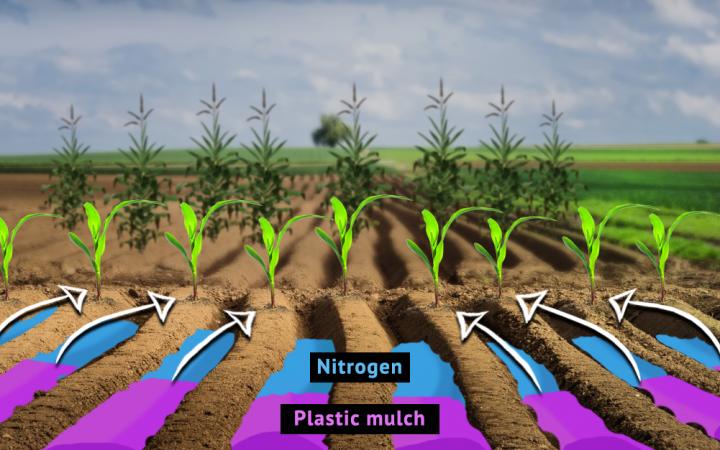RUDN pedologists studied the combined effect of nitrogen-containing fertilizers and plastic mulching.

Credit: Allen Dressen
Nitrogen is a part of organic compounds that are of extreme importance for plants: chlorophyll, proteins, hormones, and enzymes. When plants lack nitrogen, their growth slows down, stems become thin, leaves get paler, and the yield reduces. In order to increase the yield, agriculturists use nitrogen fertilizers. However, if the level of nitrogen in the soil is too high, it leaves it in the form of laughing gas, ammonia, and other gases that pollute the atmosphere. Plastic mulching is one of the means to optimize nitrogen consumption and prevent its loss, including in the gas form. However, this method has not been analyzed from the scientific point of view yet. A RUDN pedologist together with his colleagues from China and the UK were the first to describe the optimal conditions for combined use of plastic mulching and nitrogen.
Chinese agriculturists suggested using plastic mulching 40 years ago. The mulching keeps moisture in place and is especially efficient in dry areas. Despite almost half a century of practical use, it was still unclear how it should be combined with nitrogen-containing fertilizers.
RUDN pedologists found out that the efficiency is affected not only by the amount and content of fertilizers, but also by the part of the bed they are applied to. The scientists made experiments in the Loess Plateau (an ancient agricultural region in Central China) and discovered the most optimal method – to till the soil and then to add the mulching and nitrogen-containing fertilizers to the ridge.
To carry out a comparative experiment, the scientists used three systems. The first consisted of a flat (not tilled) bed with plastic mulching. In the second and third cases the soil was tilled, and plastic mulching was added to the ridge between two furrows. In the second system the fertilizer was applied to the ridge as well, and in the third one – to the furrow. All three beds were used to growth corn, and after that their yield was compared.
The yield from the tilled land was on average 9.7% bigger than from the flat one, and the consumption of nitrogen by plants was 72.5% higher. The comparison of the second and the third system was more interesting. The major share of nitrogen – 96.5% – was consumed from the ridges, and furrows turned out to be the main source of nitrogen loss. The agriculturists detected the movement of nitrogen from the ridges to the furrows and back. However, they connected it with the movement of water in soil due to the peculiarities of landscape and different soil moisture under the plastic mulching and without it.
“The results of the experiment lead us to an important conclusion: in order to increase the efficiency of nitrogen fertilization and to reduce environmental pollution with nitrogen compounds and erosion, fertilizers should be added to the ridges and combined with plastic mulching,” said Yakov Kuzyakov, a co-author of the study, and a RUDN employee.
###
Media Contact
Valeriya V. Antonova
[email protected]
Related Journal Article
http://dx.




